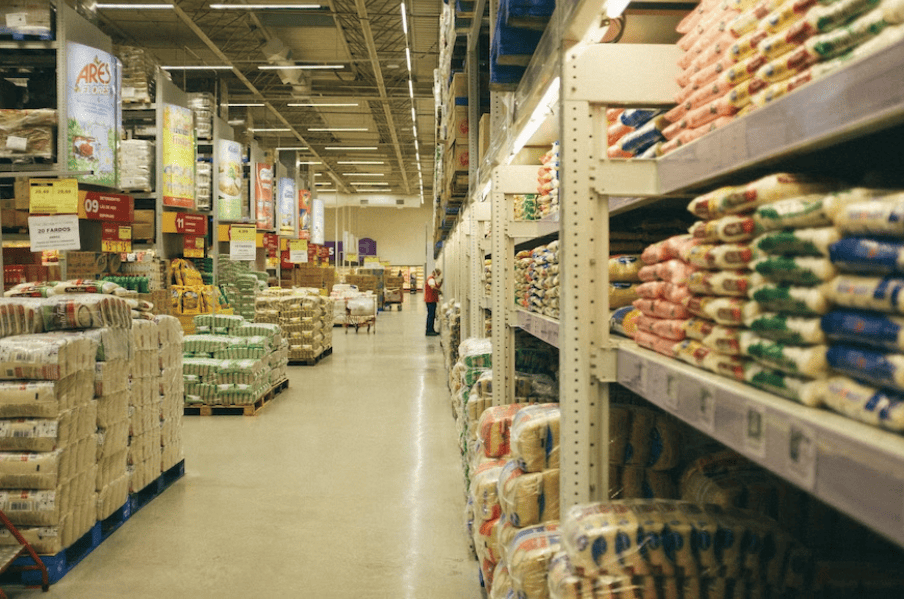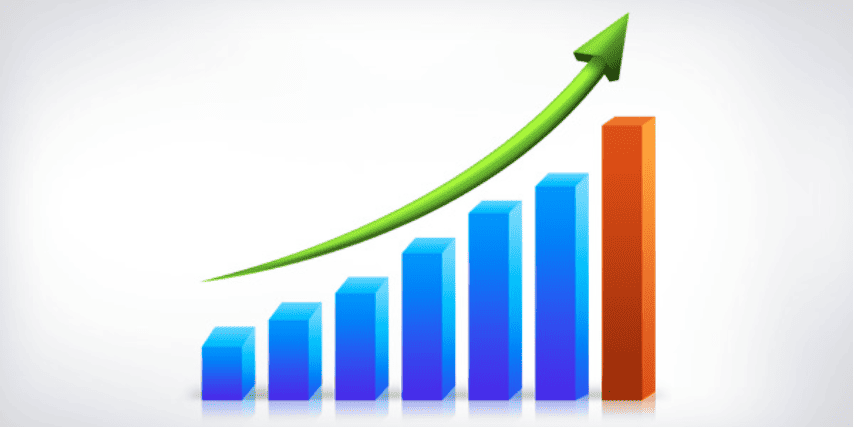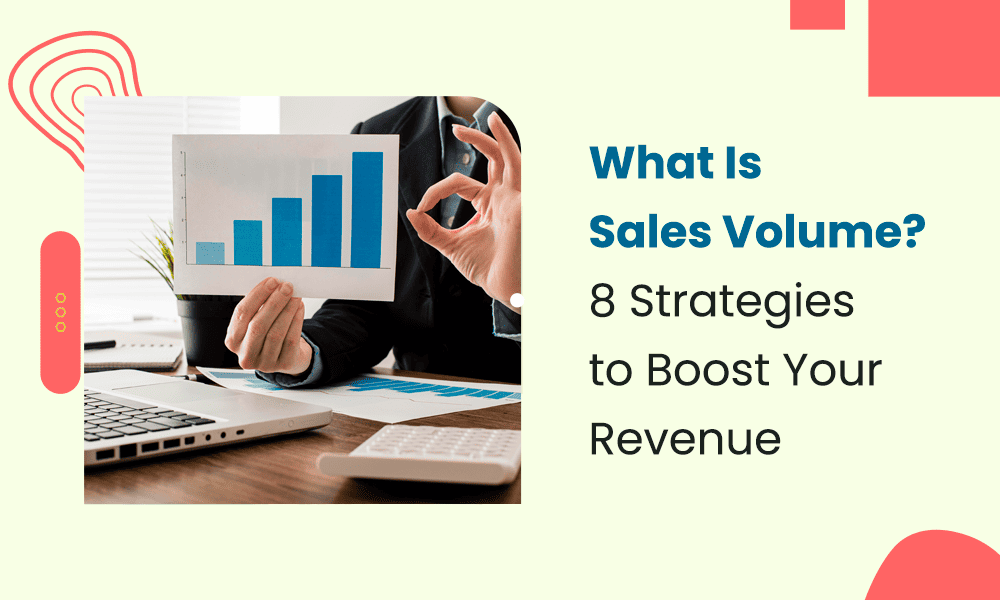Some commonly used metrics to evaluate a business’s sales performance include gross profit, net income, conversion rate, length of the sales cycle, total revenue, and more.
But to much surprise, companies often overlook one critical KPI, i.e., sales volume.
Not to be confused with total sales, sales volume measures the number of units of a product sold by your company during a given financial period. On the other hand, total sales is the monetary value and is calculated as the multiplication result of the unit price of a product and its quantity sold.
This article will focus on the concept of sales volume, the correct formula to calculate it, and some effective strategies to help increase your sales volume.
Table of Contents
Why Is Sales Volume Important?
While total sales give you a clear understanding of the overall business performance, it doesn’t indicate which product is bringing in the most sales.
Let’s say you want to convince your stakeholders to increase the production of a product — how do you convey the numbers?
Total sales do not break down your sales revenue from your product sales.
Sales volumes help you determine your best and worst performing products and help you to improve your sales across all product lines.
Besides, sales volume is a crucial metric that helps investors evaluate whether a business is expanding or contracting.
It can be calculated either at the product level, by product line, consumer, or sales region.
Read also: Return on Sales: Does Your ROS Make Sense Yet?
How to Calculate Sales Volume

There are two main formulas for computing sales volume: unit and percentage.
The unit formula calculates sales volume by multiplying the number of units sold by the time period. Let us look at an example to understand it better.
If a grocery store sells 2,000 packets of chips in one month, the sales volume, according to the unit formula, will be:
Number of units sold * Time period
2,000 * 1 = 2,000
Hence, the sales volume for the month will be 2,000.
According to the percentage formula, sales volume is computed as the percentage of units sold of a singular good or service. The formula for calculating the percentage of units sold is:
(Units of a product sold * 100) / Total units of all products sold
Let us take the example of the grocery store again. Assume that the shop sold 2,000 chips packets in a month, but it also sold 1,000 bottles of milk and 500 bread loaves during the same time period.
Here, the total products sold = 2,000 + 1,000 + 500 = 3,500.
Number of chips packets sold = 2,000
Thus, the sales volume for chips packets, using the percentage formula, will be
(2,000 * 100) / 3,500 = 57.14% of total sales volume
This implies that out of the total goods sold by the grocery store, chip packets accounted for 57.14% of the units.
However, it is important to keep in mind that this does not take into account the value of sales generated.
Just because chips packets generated 57.14% of the total sales volume, it does not imply that they accounted for 57.14% of the sales revenue or total sales.
Read also: MEDDIC Sales Methodology: What Is It and Why You Need It
Sales Volume Variance
Here is another formula you should know about: sales volume variance.
Sales volume variance helps you calculate the positive or negative impact of the number of units sold than expected.
The formula for computing sales volume variance is:
(Number of units sold – Projected units sold) * Price per unit
Let’s look at the same example again. Based on the sales volume of previous months, the store assumes around 57.14% of their total units sold will come from chips packets alone.
Given that they sell around 2,000 packets of chips in a month and holidays tend to increase sales, they forecast selling approximately 3000 packets.
But the store ends up exceeding expectations at the end of the holidays by selling around 3,500 chips packets.
Assuming that the unit price of a packet of chips is $5, the sales volume variance will be:
(3,500 – 3,000) * 5 = $2,500
The above example is that of a positive sales volume variance since the grocery store exceeded its predicted number of units sold.
Now, suppose that the grocery store anticipated selling 3,000 packets of chips but sold only 2,800 units. Here, the sales volume variance will be
(2,800 – 3,000) * 5 = -$1,000
This is an example of a negative sales variance since the store sold fewer units than expected.
Read also: The 10 Best Sales Books (That Aren’t About Manipulation and Bull****)
Break-Even Sales Volume
One of the ways businesses can shift a negative sales volume variance is by achieving a break-even sales volume.
Break-even sales volume estimates the number of units of a product that you need to sell in order to earn a profit of zero.
It is a useful metric when evaluating whether to eliminate a particular product or cut back on expenditures.
The formula for computing break-even sales volume is
Projected expenditure over a time period / Price per unit of a product = Number of units required to break even
Let me explain. From the same example above, assuming that the store spent $20,000 in expenditures and sold chips packets at $5 per unit, the number of units required to break even would be:
20,000 / 5 = 4,000
Hence, 4,000 units is the break-even sales volume needed to achieve zero profits.
Read also: Track These 15 Marketing Metrics To Grow Your Small Business
8 Strategies to Increase Your Sales Volume

Once you have identified low-performing products, the next step is to build strategies to increase their sales volume.
Let us look at some sales tips that you can use to boost your business sales volume.
#1. Know Your Product USP
Before you launch a product or service, you need to define its USP.
USP, or unique selling proposition, is the characteristic of a product that will appeal to your audience and help distinguish it from the competitors.
Answer a few questions like:
- What makes your product unique?
- What value does it offer to customers?
- Why will your customers choose you over your competitors?
Solving these questions will help you develop strategies focused on these qualities that will assist you in selling.
Take the time to look at and understand each of your products and note at least two qualities that make them unique.
This will help you advertise more effectively, boosting revenue and sales volume.
Read also: What Are Net Sales? – Formulas, Calculations, And Examples
#2. Focus On Your Client’s Needs
Another important strategy that will help boost sales volume is focusing on your customer’s needs.
If you know nothing about your audience’s likes and dislikes, they will be uninterested in buying from you.
To increase sales volume, you need to deeply understand your client’s needs and appreciate their choices.
For instance, if you own a cosmetics store and want to launch a new range of sunscreen, you should research the different variations of the same product that will suit your audience’s needs.
Some factors that need to be considered include age, gender, skin type, presence of skin diseases, SPF level, and so on.
Read also: A Productive Sales Meeting in 30 Minutes? Here’s How!
#3. Nurture and Qualify Your Leads
People won’t make a purchase immediately after seeing your product. They need nurturing that will eventually qualify them as high-quality leads.
Qualifying leads implies determining whether someone meets your target audience criteria, while nurturing includes providing your prospects with relevant content based on their stage in the sales pipeline.
The content should inform them about the product and how it will benefit them, address any questions or doubts, and build trust in your brand.

#4. Speed Up Your Sales Cycle
When you increase the velocity of your sales cycle, the sales volume increases too.
The faster the sales cycle, the more products you can sell within a short span of time.
You should automate routine marketing and sales-related tasks to fasten your sales cycle.
Furthermore, invest more time and money into your most in-demand products and simplify the buying process.
Some more ways to streamline operations and shorten the sales cycle are by digitizing payments, personalizing communications, resolving customer issues in advance, and arranging meetings with prospects regularly.

#5. Reward Loyal Clients

Boosting your sales volume does not only imply huge crowds thronging your stores.
It also involves appreciating your loyal customers, so they keep coming back.
The best way to do so is by introducing a rewards program, providing discounts and offers after a certain number of orders, and encouraging customers to share feedback and use your service to earn loyalty points.
These loyalty points are fully redeemable in exchange for a product or gift.
This will incentivize your clients to keep making purchases from your brand.
Read also: Sales Quota 101: What It Is and Why It Matters to Your Business
#6. Work Closely With Your Marketing Team
Besides qualifying and nurturing leads, make sure that your sales volume targets are aligned with the marketing team’s goals.
Your marketing team shouldn’t be pressurized to add as many prospects to the pipeline that do not qualify your leads just to match the numbers.
It’s crucial that the right leads are in the sales pipeline.
Besides, marketing and the sales team need to coordinate and discuss your customers’ pain points and generate content that will build trust and convince them to place orders.

#7. Incentivize Your Sales Reps
Well, who doesn’t like rewards for their stellar performances?
Sales reps are no different.
When you add an incentive, sales reps are enticed to work harder to achieve their monthly target.
Rewards and recognition have been one of the most contributing factors in keeping employees motivated.
Depending upon your company’s remuneration structure, you can decide how and when to incentivize your sales team.
It will also help boost their productivity, thereby increasing the sales volume of your products.

#8. Identify any roadblocks and risks
Sales volume is not just useful for calculating the number of units sold of a product or service.
It also helps you identify any shortcomings in your sales strategy.
For example, if a product is experiencing insufficient sales in a specific market or region, you can use the data to modify your sales strategy.
This could include either removing that product and replacing it with another more in-demand good or improving the existing product’s features.
In simple words, sales volume is a good indicator of understanding how your products are perceived in the market and how you can change that.
Read also: How To Upsell With Email Marketing
Wrap-Up: Boost Your Sales Volume Using CRM Software
Businesses today are increasingly adopting technology to increase their operational efficiency.
Using a CRM tool helps streamline and automate the entire sales operations and promotes easy collaboration.
It ensures no communication is lost between the marketing and sales team and that the goals remain aligned.
With EngageBay, you get complete visibility into your sales pipeline and understand how your sales reps perform.
It also provides insights into your campaign performances – how your audiences are reacting to your products and what needs to be improved.
Its capability to generate reports in real-time allows businesses to make decisions based on current market trends.
Get a demo of our product today and learn how to boost your sales volume. It’s free for up to 15 users!




Thanks, Nikita Agarwal for sharing such useful information.